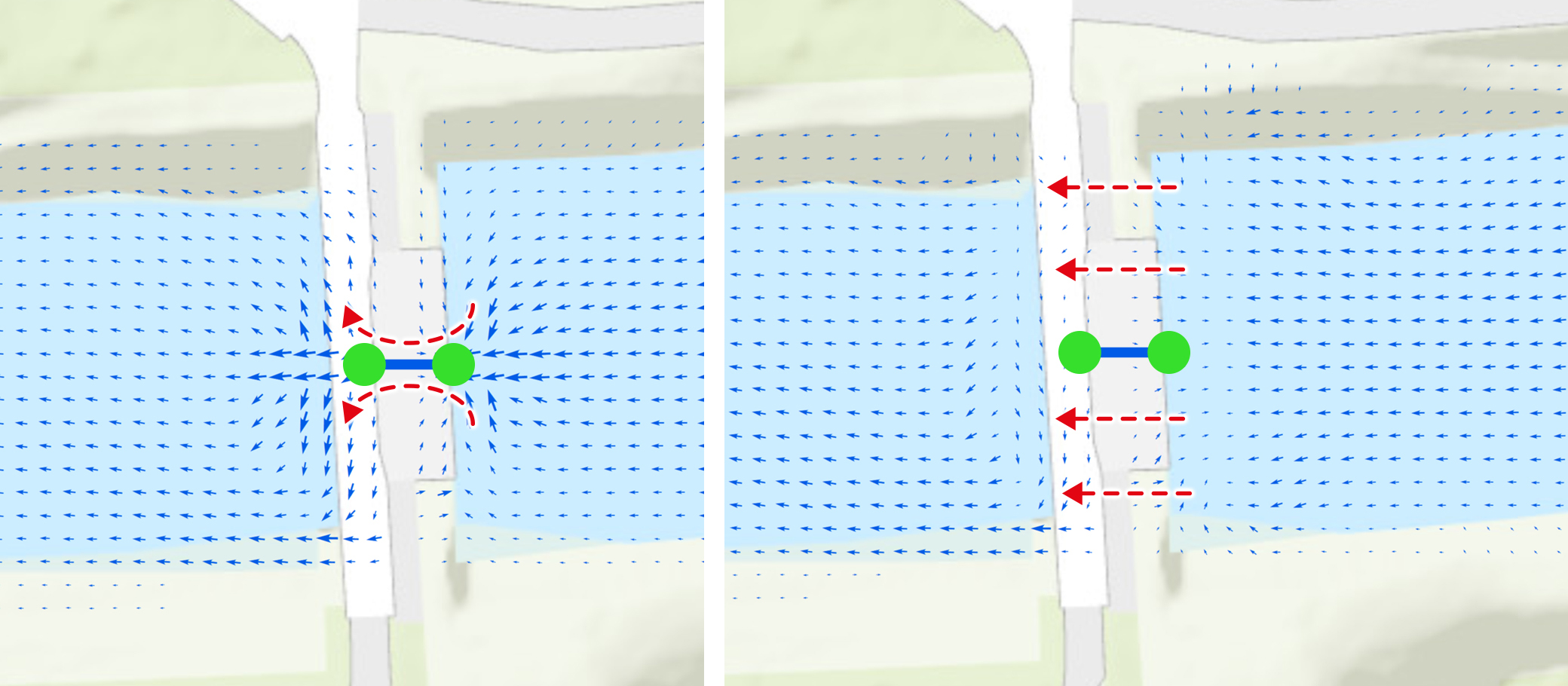Culvert diameter (Water Overlay): Difference between revisions
Jump to navigation
Jump to search
No edit summary |
No edit summary |
||
| Line 15: | Line 15: | ||
{{article end | {{article end | ||
|notes= | |notes= | ||
* A culvert is identified as a rectangular (box) culvert when it also has the [[Culvert_rectangular_height_(Water_Overlay)|Culvert rectangular height]] | * A culvert is identified as a rectangular (box) culvert when it also has the [[Culvert_rectangular_height_(Water_Overlay)|Culvert rectangular height]] [[key]] set to a non-zero positive value. In such situation, the diameter is interpreted as the width of the cross section of the rectangular culvert. | ||
|seealso= | |seealso= | ||
*[[Culvert formula (Water Overlay)]] | *[[Culvert formula (Water Overlay)]] | ||
Revision as of 09:20, 6 October 2020

| Icon | Key | Unit | Range | Description | Default value |
|---|---|---|---|---|---|
| |
CULVERT_DIAMETER | m | The inside diameter of the circular-shaped Culvert, or the inside width of a rectangular-shaped Culvert. | 1 |
The diameter of the culvert not only affects the amount of water which can flow through the culvert, but also the amount of grid cells on either side of the culvert which allow water to flow through to the other side. The greater the culverts diameter, the more cells are considered to be part of the entry- and exitside of the culvert.The amount of cells which are considered to be part of the entry- and exitside of the culvert, are based on the value of the CULVERT_DIAMETER attribute. If the CULVERT_DIAMETER attribute is > 25m, the amount of cells has reached a maximum and does not increase anymore.
Notes
- A culvert is identified as a rectangular (box) culvert when it also has the Culvert rectangular height key set to a non-zero positive value. In such situation, the diameter is interpreted as the width of the cross section of the rectangular culvert.




